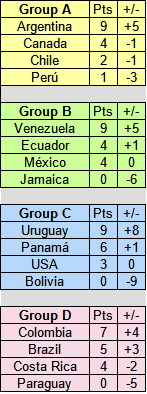The 2024 Euros are on and here is a progress report of what has happened now the group stage is completed. What can we make of proceedings so far?
A: The hosts moved smoothly into the next stage with Switzerland. The other two teams didn't really look like progressing. Scotland's first up match was a horror show but they changed things and regained some respectability.
17 goals (av 2.8).B: This was a carbon copy of Group 1 with two sides better than the others. That said. Italy wasn't all that convincing and the niggling Croatian team could have progressed but thankfully didn't. Albania tried hard. 14 goals (av 2.3).
C: Some tournaments have a group of death but this was a group of boring. No games featured more than one goal per team or two per game. England cautiously tip toed through which impressed few. Denmark and Slovenia were resolute defensively. 7 goals (av 1.2).
D: France was the only unbeaten side and favourite but two draws consigned them to second place. Austria was impressive and deservedly won the group after losing the first match. The Netherlands was average and Poland was quite poor. 15 goals (av 2.5).
E: This was an unusually tight group with all teams ending up with four points. It was an evenly contested group so as favourite Belgium will be disappointed they didn't stand out. The Ukraine wanted good news no doubt but it wasn't to be. 11 goals (av 1.8).
F: Top team Portugal won the group but was surprisingly beaten by Georgia in the final match. That lifted them into the next round. With Turkey also going well, it was a hard working Czechia that missed out. 17 Goals (av2.8).
The group matches are now known and are shown below. None of the last 16 teams could say they have a soft game. The better rated sides are not firing on all cylinders and that means the lower ranked sides could force an upset or three.
Sixteen: Germany and Switzerland advanced effortlessly while Spain overwhelmed a plucky Georgia. England were the one side to advance without conviction. A last gasp goal in regular time and a quick one into extra time saved them but otherwise, it was overly cautious. Slovakian players showed the merit of acting classes with repeated feigned injuries but to no avail.
The Netherlands impressed in advancing to the last eight but neither France nor Portugal showed much fire power. Portugal showed penalties are their thing. Turkey battled to send an in form Austria home.
Group E only had 1.8 goals per match and the group expired this round. Group C was even worse at 1.2 and that group survived only because of a late flurry by England. Two poor groups. Group B was the next lowest scoring group and is represented by one team, Spain.
Eight: Spain and Germany was a good match up with Spain producing the slightly better play and acting. Germany got an equaliser late to earn extra time but then Spain scored late in extra time to win. The other match (France and Portugal) was a borefest in comparison. Two sides with little idea of how to score and neither did until penalties.
On the other side of the draw, the England vs Switzerland game was low on goal scoring opportunities. The Swiss went ahead late in the game but England soon equalised but it ultimately came down to penalties. Türkiye outplayed the Netherlands in the first half to lead 1-0 at the break but the Netherlands (third in their group) got two back in the second in a more entertaining match.
Four: Spain may have fallen behind early but they soon were a goal up and never relinquished that. France struggled to score all tournament so it was unlikely they could address conceding two.
The Netherlands also went ahead early on but when a defender missed the ball and played the man in the penalty box, there was only one decision to make and that wasn't hard. Harry took it. Just when extra time loomed large, Gareth Southgate's replacements (no, he did actually make some) paid off.
Two: Spain outplayed England overall but score of 0-0 was score at half time. It soon became 1-0 to Spain though. England equalised later to set up a fine finish only for Spain to find a very late winner.
Summary: Spain has now won four tournaments to Germany's three but Germany has been to six finals compared to Spain's four. Italy and France have each won two with another three a single win. Russia (USSR) has lost three finals with England two, both yet to win a trophy.
The historical chart is below and barely fits with slightly blurry, smaller fonts the result. Russia (including the former USSR) has made three finals, all unsuccessful. They weren't invited in 2024. The old Czechoslovakia I included with Czechia results as the stronger of the two nations that emerged. I did the same with Croatia and the old Yugoslavia. Russia too with the USSR as already mentioned.































